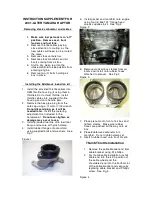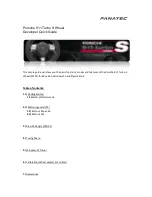
Adjusting the Front Seats
Always make seat adjustments before driving.
Adjust the driver’s seat as far back as
possible while allowing you to maintain full
control of the vehicle. You should be able to
sit upright and well back in the seat,
adequately press the pedals without
leaning forward, and grip the steering
wheel comfortably. The passenger’s seat
should be adjusted so that it is as far back
from the front airbag in the dashboard as
possible.
The National Highway Traffic Safety
Administration and Transport Canada
recommend that drivers allow at least 10 inches (25 cm) between the center of
the steering wheel and the chest.
Front Power Seat(s)
*1
1. Horizontal Position Adjustment
2. Driver's Side Height Adjustment
3. Seat Back Angle Adjustment
*1 - If equipped
VEHICLE CONTROLS
52 |
Front Manual Seat(s)
*1
1. Driver's Side Height Adjustment
2. Horizontal Position Adjustment
3. Seat Back Angle Adjustment
Sitting too close to a front airbag can result in serious injury or death if the
front airbags inflate.
Always sit as far back from the front airbags as possible while maintaining
control of the vehicle.
Adjusting the Head Restraints
Your vehicle is equipped with head
restraints in all seating positions. Head
restraints are most effective for protection
against whiplash and other rear-impact
crash injuries when the center of the back
of the occupant's head rests against the
center of the restraint. The tops of the
occupant's ears should be level with the
center height of the restraint.
For a head restraint system to work properly:
• Do not hang any items on the head restraints or from the restraint legs.
• Do not place any objects between an occupant and the seat-back.
*1 - If equipped
VEHICLE CONTROLS
| 53
















































